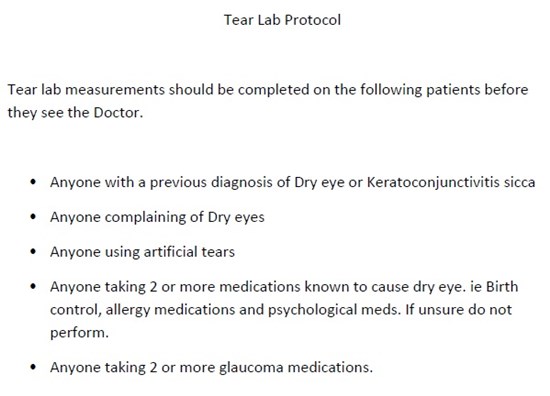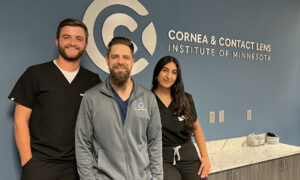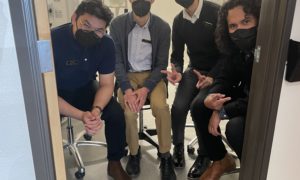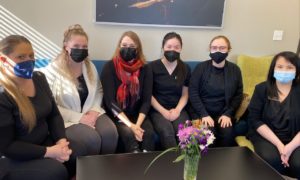By Scott Huffer, OD, FAAO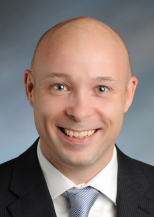
May 11, 2016
SYNOPSIS
Quarterly, half-day staff meetings can help set the agenda in your office, and allow for continuous improvements to the patient experience and practice growth.
ACTION POINTS
SET IMPROVEMENT GOAL. Determine whether daily huddles, or weekly meetings, are enough to communicate and set the agenda for practice improvements.
CREATE ITINERARY. Set an itinerary that addresses goals, and includes presentations by doctors and outside guest speakers, in addition to staff presentations, if possible.
SOLICIT AND VALUEEMPLOYEE IDEAS. Ask employees about what changes they think are needed, and then discuss how to accomplish those changes.
Good communication is essentialin cultivating amotivated and productive staff. In our five OD, one-MD practice we have monthly staff meetings, largely about communication.But we found we had one more need: Each quarter, we meet for a half-day, away from the office, to work on streamlining our processes and improving the patient experience.
The busy schedule of a successful practice makes training employees to deliver superior care to patients challenging. Our half-day meetings with staff help us better manage our employees, and ensure that we are all on the same page in the experience we want to create for patients.
Are Half-Day Staff Meetings Needed?
The decision for us to hold quarterly, half-day meetings with staff came out of discussions with other providers at a Leadership OD conference a few years ago. At the time we were holding one monthly staff meeting for an hour. Some of the offices were having daily 5-10 minute huddles with weekly lunch meetings and quarterly meetings or semi-annual retreats. Our monthly staff meetings are largely communication. We discuss what is new with insurances, what new contact lens is being released, or which contact lens solution is being discontinued. We were not doing enough to improve our process and train our staff.
In our half-day meetings, we ask the staff for ideas to improve the way the office functions. In our monthly meetings, we communicate updates on staffing, insurance and any other issues in the office.
Three Positive Things That Came Out of Our Quarterly Meeting
Creation and implementation of TearLab protocols. Click HERE, or the image below, to view our new TearLab protocols.
Addition of a dispensing desk.
Improved triaging through education of common conditions.
Create Itinerary for Meetings
The meetings start with ordering lunch for everyone in the office. We typically will then break into sections with optical staff, clinic staff and front desk staff breaking into subgroups. One doctor goes with each group as a leader/facilitator. Each group identifies problems occurring consistently within that group. We then all brainstorm together ways to solve the problem. Each group is expected to identify one particular action plan to be initiated within the next week to improve the problem. The three groups then come together to discuss challenges and action plans together.
Occasionally we will invite a guest speaker. We had a representative from TLC discuss LASIK with our staff. We also had a representative from Zea Vision discuss supplements for eyecare with our staff and demonstrate MPOD testing. At another meeting we had a financial service professional talk about personal finance. These talks will usually start right after lunch, and the same breakout sessions will still occur in a shortened format.
We get better cooperation from staff for selling vitamins. We recommend a lot of fish oil for dry eye and macular degeneration vitamins. I believe our staff didn’t have a good understanding of why we were recommending vitamins after an eye exam. Some staff members have started taking the vitamins, and speak to patients about the benefits. The education provided increased our vitamin sales by approximately 25 percent.
When referring for LASIK we now have materials to hand to patients with information about the facility we recommend. Staff members are now more comfortable referring patients for LASIK. This allows for a more seamless referral process, and makes patients more comfortable with the procedure and our competence.
Currently, our employees are not assigned a role in getting ready for the meetings. However, they do frequently come to the meetings with items to discuss. Inefficiencies frustrate staff members greatly. They have welcomed these meetings as a mechanism to engage everyone in fixing their particular problem(s).
At one or two meetings, we have had the doctors each take a group of staff and educate them on common ocular problems, such as conjunctivitis, cataracts, diabetic retinopathy, macular degeneration and vitreous detachments. We utilize Eyemaginations as a teaching tool. Our staff really enjoy learning more about medical eyecare, and are much more effective in scheduling emergency visits after this training.
At our next meeting, we are having a motivational speaker. I think we need to do our best to make these meetings fun for our staff to keep them engaged, and excited about the work we do.
Determine Cost in Time & Money
It costs our office $5,000-$10,000 to close for the afternoon, adding up to about $20,000-$40,000 per year. However, we have gained a lot of efficiencies from these meetings. Our staff has become much better trained. Our front desk staff is quite good at triaging emergency phone calls because of trainings at these meetings, and our technicians have become much better at getting thorough case histories as a result of this added training. I think we easily get this money back in the form of a better trained and more productive staff.
Thanks to these meetings, we discovered and implemented a way to rearrange our optical to allow one more dispensing desk to fit. The dispensary looks better and allows more patients to be served at a given time. This change alone will probably enable us to recover half of our annual meeting costs. In addition, we recently implemented a protocol for when technicians would perform TearLab testing when working up patients. It allows us to provide better care for dry eye patients without sacrificing efficiency. This TearLab testing, which increased by 50 percent with the new protocol, probably recovers another 30 percent of our annual meeting costs.
We have five doctors over 25 employees, so small changes in process can have significant returns.
Scott Huffer, OD, is a partner with with Drs. Helfman, Lasky & Associates in Nashua, N.H. To contact: eyedocscott@gmail.com

